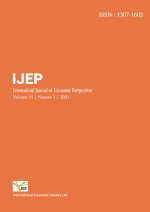Indian national movement under congress
Keywords:
anti-colonial movement, national consciousness, national identityAbstract
For India, the making of national identity was a long process whose roots can be drawn from the ancient era. India as a whole has been ruled by emperors like Ashoka and Samundragupta in ancient’s times and Akbar to Aurangzeb in Medieval times. But, it was only in the 19th century that the concept of national identity and national consciousness emerged. This growth was intimately connected to the anti-colonial movement. People began discovering their unity in the process of their struggle against colonialism. Around this time many organizations were being formed which raised their voices against British rule. Most of these organizations were regional. Some of these organizations were very active such as Bengal India Association, Bengal Presidency Association, Puna Public Meeting, etc. However, it was felt that if these regional organizations could work jointly it would help the Indian masses to raise their voice against British Rule. This led to the formation of the Indian National Congress in the year 1885 which lead Indian National Movement.
References
Alquwaizani, M. (2011). Internationalizing the domestic: The Harlem Renaissance and the Third World anti-colonial movements. Journal of King Saud University-Languages and Translation, 23(1), 59-64. https://doi.org/10.1016/j.jksult.2010.04.001
Ardhana, I. K., & Wijaya, I. N. (2017). Indian influences on Balinese culture: the role of Hinduism and Buddhism in present day Bali. International Research Journal of Management, IT and Social Sciences, 4(1), 88-105.
Burgess, D. J., Vallone, D., Bair, M. J., Matthias, M. S., Taylor, B. C., & Taylor, S. L. (2021). Shifting the National Consciousness about Pain Treatment: The Critical Need for a National Public Education Campaign. The Journal of Pain. https://doi.org/10.1016/j.jpain.2021.03.156
Idris, F., Hassan, Z., Ya’acob, A., Gill, S. K., & Awal, N. A. M. (2012). The role of education in shaping youth's national identity. Procedia-Social and Behavioral Sciences, 59, 443-450. https://doi.org/10.1016/j.sbspro.2012.09.299
Jaspal, R., Nerlich, B., & Lemańcyzk, S. (2014). Fracking in the Polish press: Geopolitics and national identity. Energy Policy, 74, 253-261. https://doi.org/10.1016/j.enpol.2014.09.007
Müller-Peters, A. (1998). The significance of national pride and national identity to the attitude toward the single European currency: A Europe-wide comparison. Journal of economic psychology, 19(6), 701-719. https://doi.org/10.1016/S0167-4870(98)00033-6
Nogué, J., & Vicente, J. (2004). Landscape and national identity in Catalonia. Political geography, 23(2), 113-132. https://doi.org/10.1016/j.polgeo.2003.09.005
Raguraman, K. (1997). Airlines as instruments for nation building and national identity: case study of Malaysia and Singapore. Journal of transport geography, 5(4), 239-256. https://doi.org/10.1016/S0966-6923(97)00021-5
Rao-Cavale, K. (2017). Patrick Geddes in India: Anti-colonial nationalism and the historical time of ‘Cities in Evolution’. Landscape and Urban Planning, 166, 71-81. https://doi.org/10.1016/j.landurbplan.2016.11.005
Rosser, Y. C. (2003). Curriculum as destiny: Forging national identity in India, Pakistan, and Bangladesh. The University of Texas at Austin.
Sabatier, C. (2008). Ethnic and national identity among second-generation immigrant adolescents in France: The role of social context and family. Journal of adolescence, 31(2), 185-205. https://doi.org/10.1016/j.adolescence.2007.08.001
Santhanagopalan, R., DeJesus, J. M., Moorthy, R. S., & Kinzler, K. D. (2021). Nationality cognition in India: Social category information impacts children’s judgments of people and their national identity. Cognitive Development, 57, 100990. https://doi.org/10.1016/j.cogdev.2020.100990
Published
How to Cite
Issue
Section
Copyright (c) 2021 Manisha

This work is licensed under a Creative Commons Attribution 4.0 International License.
Allows users to: distribute and copy the article; create extracts, abstracts, and other revised versions, adaptations or derivative works of or from an article (such as a translation); include in a collective work (such as an anthology); and text or data mine the article. These uses are permitted even for commercial purposes, provided the user: gives appropriate credit to the author(s) (with a link to the formal publication through the relevant URL ID); includes a link to the license; indicates if changes were made; and does not represent the author(s) as endorsing the adaptation of the article or modify the article in such a way as to damage the authors' honor or reputation. CC BY







